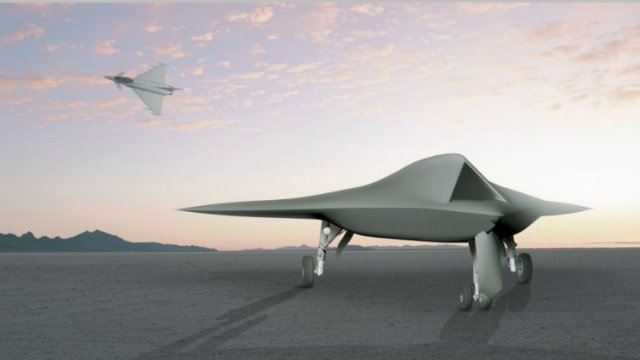The UK has set out a future combat aviation force structure to meet the country’s post-2030 combat air requirement. In a House of Commons Defence Select Committee (DSC) report published in late July, the UK government sets out a future force structure that includes options for unmanned aircraft, additional buys and upgrades of ordered and current aircraft, as well as a clean-sheet design for a new manned fighter platform.
As laid out in the report, titled Remote Control: Remotely Piloted Air Systems – current and future UK use: Government Response to the Committee’s Tenth Report of Session 2013-14, this structure will comprise one or a combination of different unmanned and manned platforms.
“A UCAV [unmanned combat air vehicle] along the lines of [the BAE Systems] Taranis is one potential element of this force mix, along with an additional buy of [Lockheed Martin F-35] Lightning II, a [Eurofighter] Typhoon life extension, or an alternative new-build manned aircraft,” the report said.
While the UK government has previously said it intended to field a mixed manned and unmanned combat aviation force (sometimes given as an 80:20 split in favour of manned to unmanned, and sometimes given as a 20:80 split), this is the first time that it has laid out specific options.
The Taranis technology demonstration programme (TDP) aims to develop key technologies and systems for a future operational UCAV acquisition programme. The Taranis TDP is running concurrently with the two-year Future Combat Air System (FCAS) programme to develop a UCAV capability for the UK, and FCAS will inform the upcoming Strategic Defence and Security Review (SDSR) in 2015 of the most appropriate future force mix.
The UK’s programme-of-record for F-35 buys stands at 138 aircraft, although to date only four have been contracted and 48 committed to. Final numbers are scheduled to be announced in the 2015 SDSR, but they are expected to be substantially less than the programme-of-record number. While the final UK order (Main Gate 5) has previously been billed as taking place in 2017, the DSC report holds out the possibility of an additional bulk order after 2030.
With the Royal Air Force (RAF) having received about 100 of its 160 Eurofighter Typhoons, the type’s current out-of-service date (OSD) is slated for 2030. The most advanced Tranche 3 aircraft should be equipped with the latest systems and avionics by then, including an active electronically scanned array (AESA) radar, and a mid-life upgrade (MLU) should just be a matter of updating these systems and refurbishing the airframes. Improvements to the twin Eurojet powerplants might also be incorporated at this stage, should a Typhoon MLU be the desired option.
By far the most intriguing of the different options in the DSC report is that of an alternative new-build manned aircraft. While futuristic design concepts, including the BAE Systems Replica low observability testbed, have been circulating for a while, this is the first time that the government has acknowledged the possibility of a future manned fighter programme for the UK.
Just before the Farnborough Airshow in July, BAE Systems revealed a host of future aircraft technologies that it was working on, including aircraft parts that can ‘heal’ themselves in minutes, and a new type of long range aircraft which divides into a number of smaller aircraft when it reaches its destination. While it is not clear what relation, if any, these concepts might have to the future UK force structure, the 2030 to 2040 timeline put forward by the company does raise the fascinating possibility that these technologies might one day find their way onto a future UK manned fighter platform.
Illustration: BAE Systems
Source: IHS Jane’s 360

